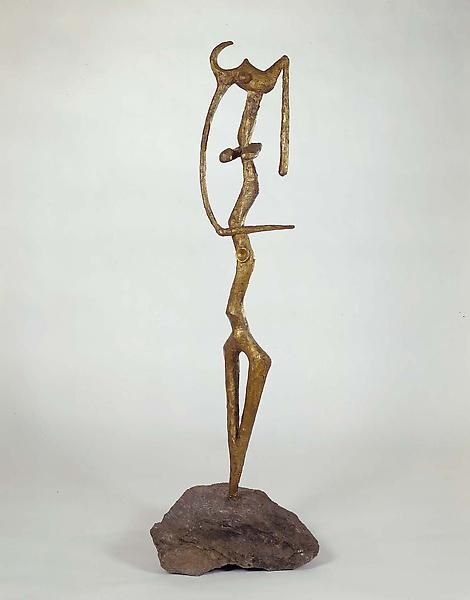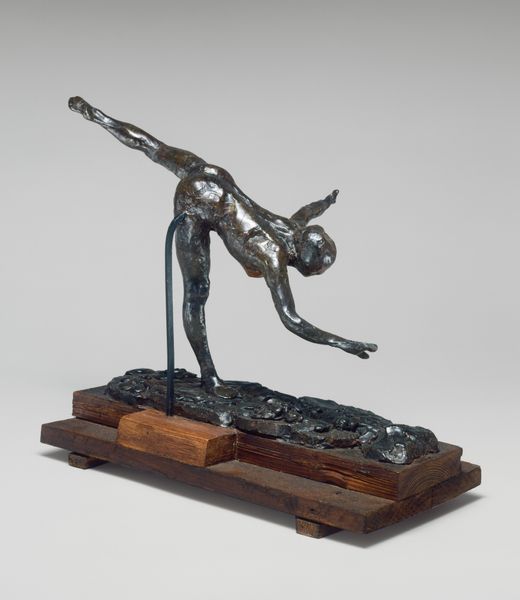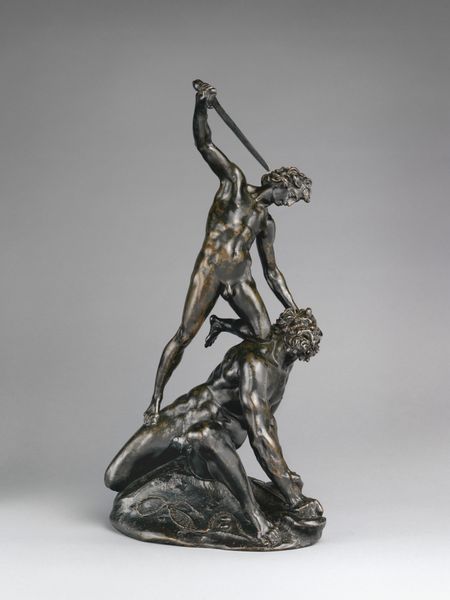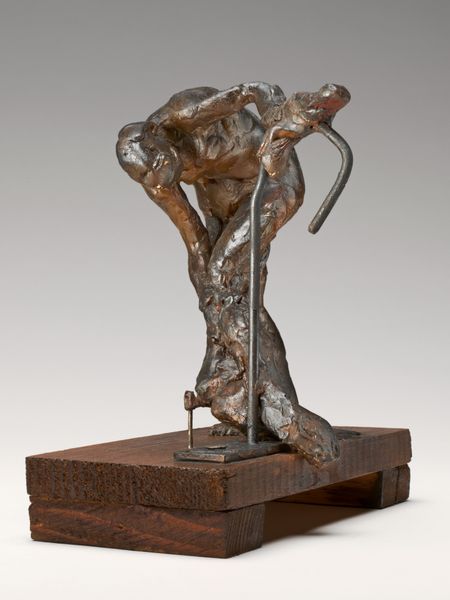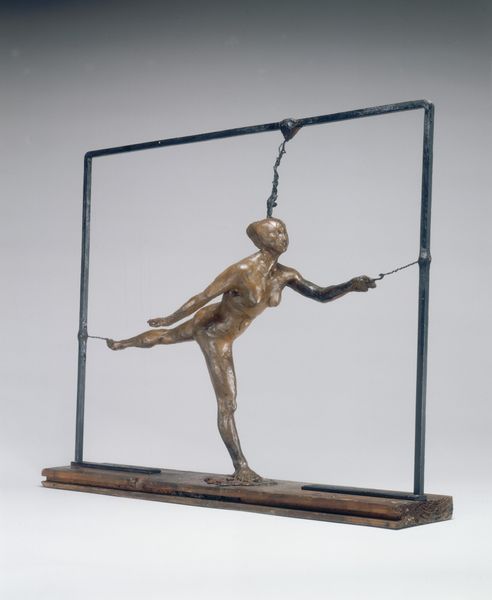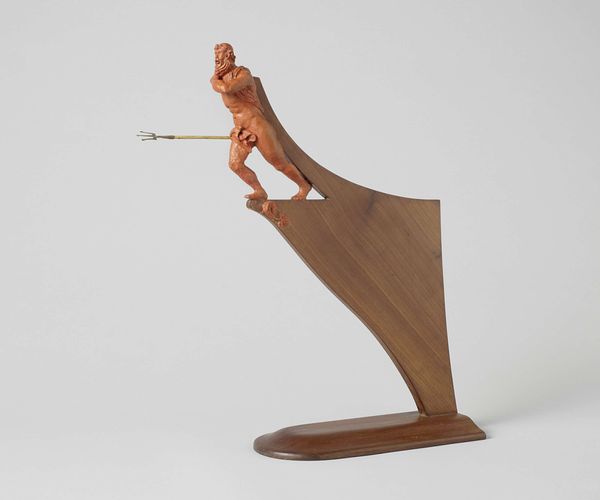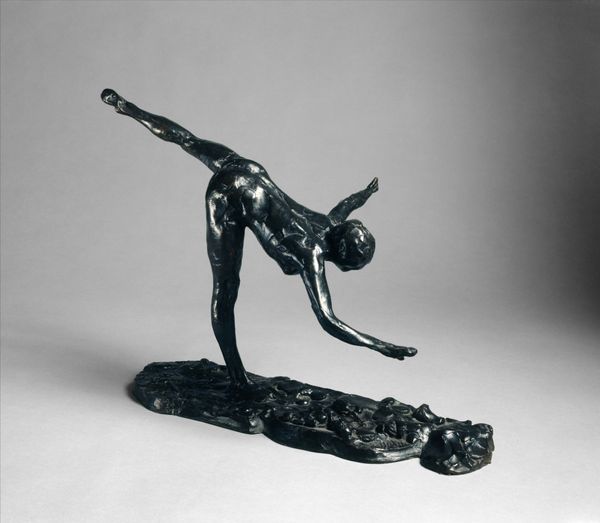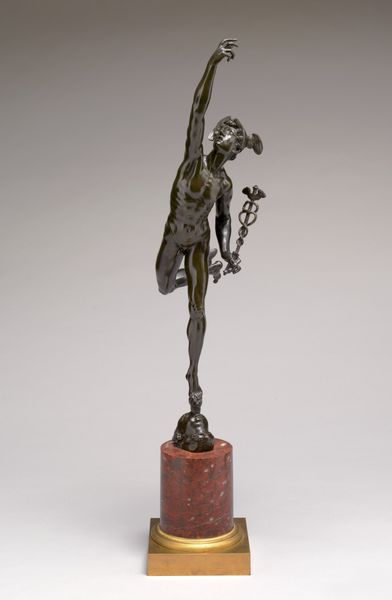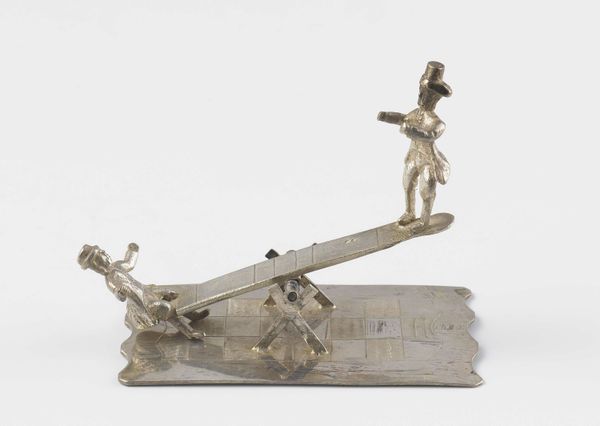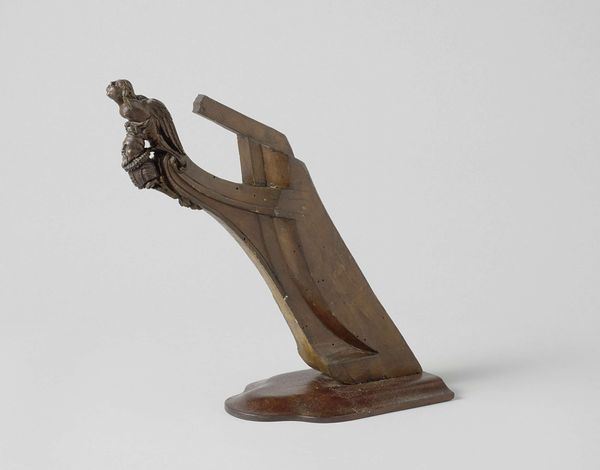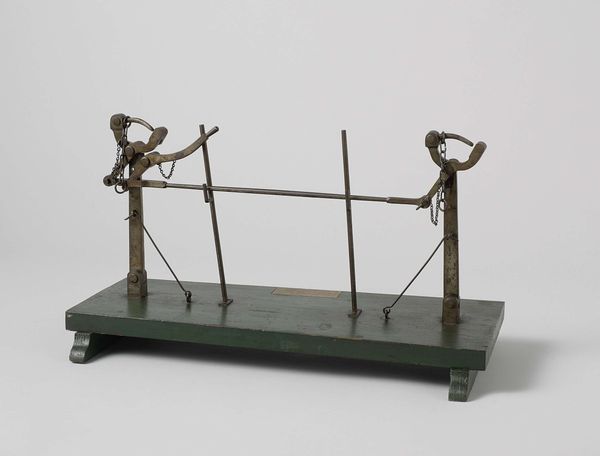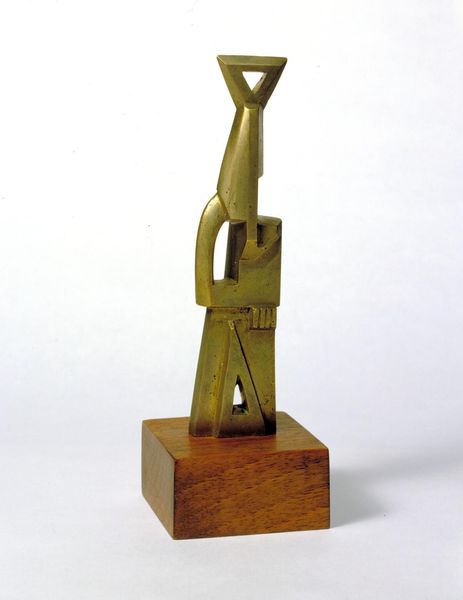
bronze, sculpture
#
sculpture
#
bronze
#
figuration
#
sculpture
#
modernism
Copyright: Giacomo Manzu,Fair Use
Curator: This is Giacomo Manzu’s “Bambino in Carrozza,” created in 1982. It's a bronze sculpture, and an interesting example of figuration within modernism. Editor: My first impression is pure joy. The rough texture of the bronze contrasts beautifully with the childlike exuberance of the figure, striking a playful balance between weighty materiality and ephemeral childhood. Curator: Manzu was deeply invested in humanism. We see throughout his body of work tender depictions of family life and childhood innocence, often set against the backdrop of post-war Italy and evolving social dynamics. The scale feels so intimate. Editor: The texture of the bronze intrigues me, though. Look at the way the surfaces are worked – not polished to a high shine but left with a more rugged feel. What does that roughness evoke in contrast to the polished surfaces we might expect? It almost feels like labor; the material resisting perfect smoothness. Curator: That’s a keen observation. I would argue that the roughness humanizes the sculpture. It resists idealization. Manzu presented his figures with imperfections, connecting them to the everyday experience of being human and showing them being enjoyed by working families. Editor: So, it’s less about celebrating childhood as some abstract concept and more about grounding it in a particular social context? The making itself then embodies the everyday reality? Curator: Precisely. The simplicity of the carriage itself, crafted from the same bronze, becomes part of that material statement about accessibility. It connects art to everyday experiences in working-class communities. Editor: That really shifts my understanding of the work. Seeing the choice of material as a conscious act of grounding the image, making a commentary on art itself… That opens up so many layers of meaning. Curator: The piece demonstrates Manzu's career-long commitment to grounding his art within a humanistic, accessible framework for viewers in post-war Italy. It’s wonderful how considering the artistic choices reshapes our interpretation. Editor: Absolutely. Now, instead of a simple depiction of childhood, I see an intention and care evident in the material itself; it is a lens through which Manzu invited viewers to experience and connect to this very precious stage of life.
Comments
No comments
Be the first to comment and join the conversation on the ultimate creative platform.
